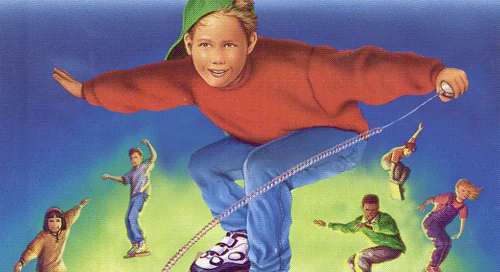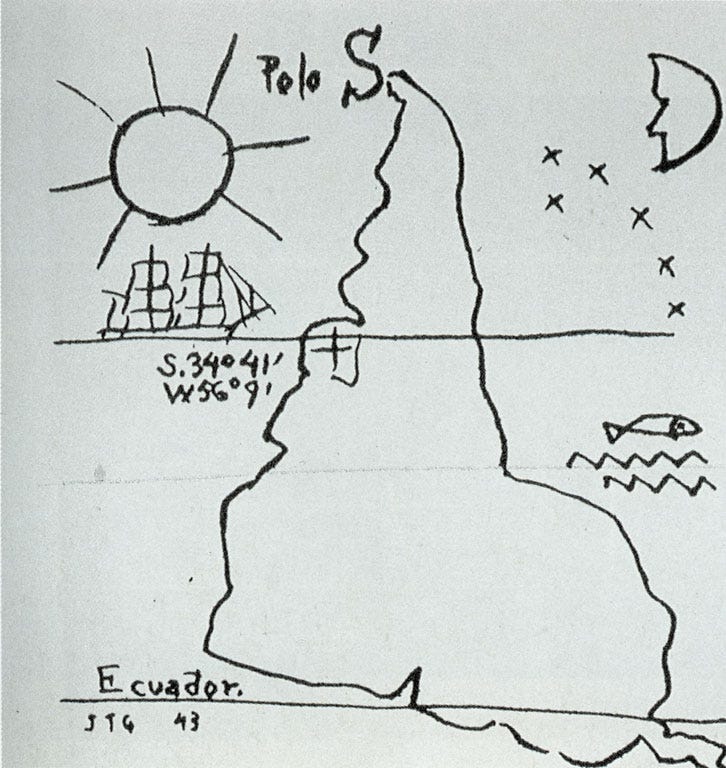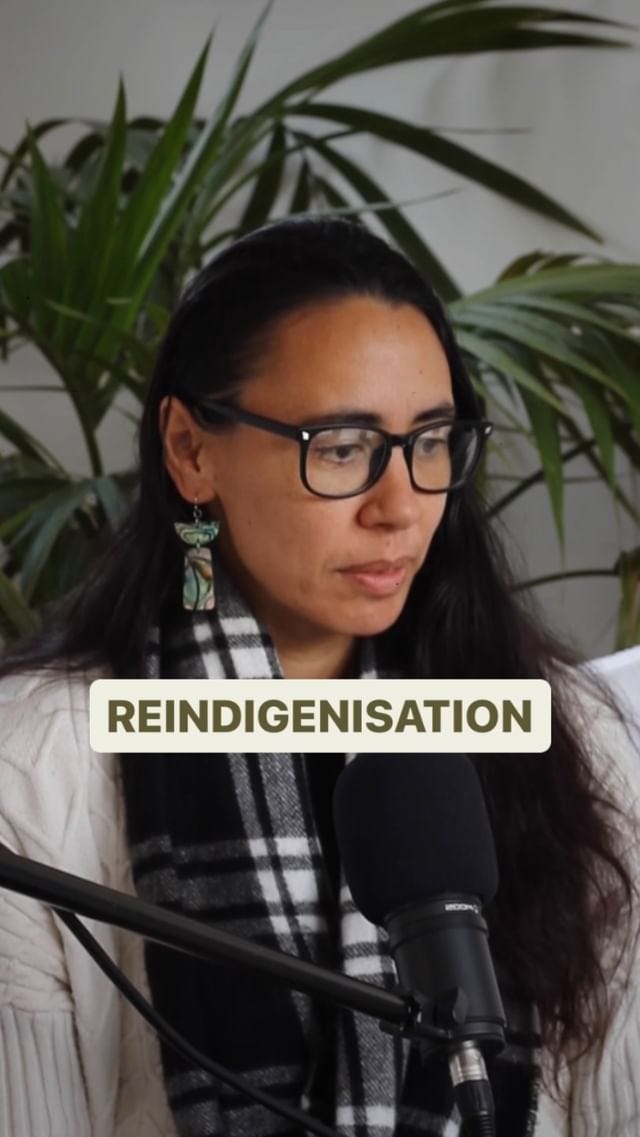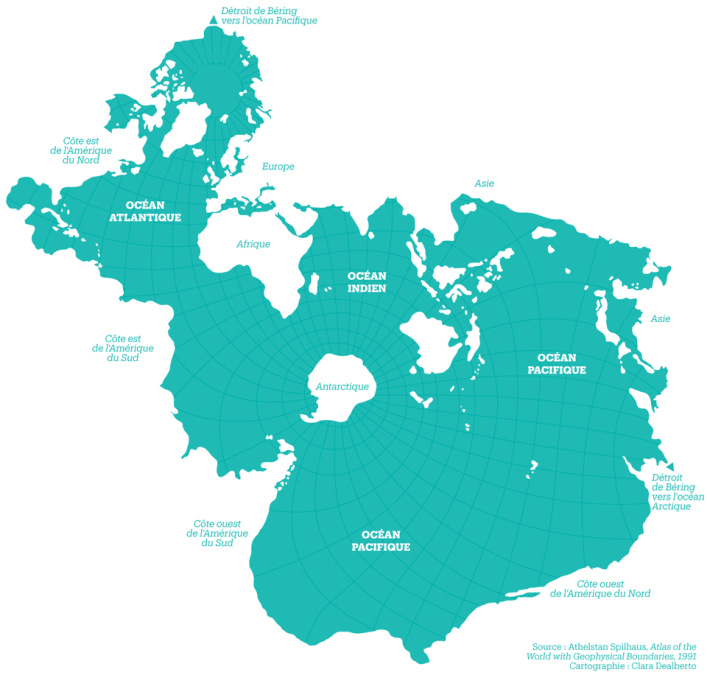🫘✨The Nexialist #0140
"what about me” effect | ultracrepidarian | vertical map of the future | américa invertida | reindigenisation x decolonisation | the oceans are one | subsea cables
welcome to another week of web-surfing and link-catching, the nexialist
hello, you! it is great to see you here again! it was a great couple of weeks with my parents around. i feel again recharged and nurtured just to be around them, having a nice time, laughing, sharing moments, food and making new memories (as juan always reminds me). so this week, there is even content recommended by my dad and quite a lot of cartographic content. the idea that “the map is not the territory” kept coming to mind, also reminding me that these moments with my family are the real deal. also, i reached a nice milestone with the number of subscribers. it’s great to know new readers keep joining and coming back, thank you again and keep inviting more people! enjoy this edition and have a great week(end)!
1 year ago » ㊗️✨The Nexialist #0088 : Design Threads | Stendhal Syndrome | Kids at Nudist Beaches | MRI Lego | Traffic: Conflict or Dance? | Brazil’s Elections | Jew’s Harp
2 years ago » 🏝✨The Nexialist #0039 : Hy-Brasil | Zealandia, the 8th continent | Thassalophobia | James Webb Telescope | Kátia Flávia
🫘"what about me” effect
 Tiktok failed to load.
Tiktok failed to load.Enable 3rd party cookies or use another browser
a few weeks ago, i was giggling at @princess_milkyy’s reaction at the #beansoup incident. if you didn’t see it, it is about a chef/creator teaching how to make a bean soup with different types of beans, and of course, someone had to ask: “but what do i put instead if i don’t like beans?” this triggered this pure and relatable reaction, which became this whole conversation online. is it some sort of irony/joke? or are people really that clueless and self-centered? (molly who posted the video declared she had lost the idgaf war, which i hadn’t completely understood the concept until that moment).
@sarahthebookfairy, decided to call it the “what about me effect”:
the ‘what about me effect’ basically combines individualistic culture with being chronically online. and it is rampant on tiktok. i feel like it’s easy to write it off as “a lack of common sense or critical thinking.” but i don’t think it’s that…. [it] is when someone sees something that doesn’t really pertain to them or they can’t fully relate to and they find a way to make it about them. or try to seek out certain accommodations for their very nuanced personalized situation. instead of recognizing that maybe they’re just not the target for that thing.
i agree with her, but i also think part of it comes from some kind of post-ironic gen-z humor, or even straightout trolls of content creators and the creator economy. it also reminded me of snl’s 2016 iconic video of the day beyoncé turned black, in which white people panic by realizing that not every cultural product is for them.
brainsparks: context collapse (tn#25), channel drift (tn#60), content capital (tn#96), superindustry of the imaginary (tn#28)
🪙ultracrepidarian
Ultracrepidarian : one who is presumptuous and offers advice or opinions beyond one’s sphere of knowledge
The meaning of this word comes from a story in antiquity, in which the famed Greek painter Apelles one day heard a cobbler criticizing the way he had rendered a foot in a painting. Apelles then said to the shoemaker something very cutting and witty about how he shouldn’t presume to judge beyond his station. The exact remark has, unfortunately, been lost in time, but since the Latin phrase ultra crepidam means “beyond the sole,” we may imagine that Appeles used this, or something similar, in his rebuke. Hence, an ultracrepidarian is one who, as a shoemaker might, goes “beyond the sole,” and offers advice on matters they perhaps should leave alone.
my father mentioned this word last week and it immediately connected to the “what about me effect.” it is also rampant online, with avatars who want to give their “two cents” about pretty much anything (vide r/confidentlyincorrect). it reminded me of brené brown’s famous quote:
“If you are not in the arena getting your ass kicked on occasion, I am not interested in or open to your feedback. There are a million cheap seats in the world today filled with people who will never be brave with their own lives, but will spend every ounce of energy they have hurling advice and judgement at those of us trying to dare greatly. Their only contributions are criticism, cynicism, and fear-mongering. If you're criticizing from a place where you're not also putting yourself on the line, I'm not interested in your feedback.” ― Brené Brown
🗺️vertical map of the future
talking about egocentrism, let’s look at another perspective-shifting idea: this vertical map in which china is at the center, with all the “necessary” distortions (just like the euro-centered map many of us have been using.)
Europe has dominated cartography for so long that its central place on the world map seems normal. However, as the economic centre of gravity shifts east and the climate warms up, tomorrow's map may be very different. Focusing on both China and Arctic shipping lanes, this vertical representation could be the world map of the future.
🌎américa invertida
Torres García's creation of the image was connected to his efforts to form a theory of "constructive universalism", meaning contemporary art that was influenced by the traditions of the indigenous Americans.
With his depiction of South America, Torres García is proposing the creation of an autonomous Latin American art movement. That is closely related to his manifesto "The School of the South" in which he stated, "I have called this 'The School of the South' because in reality, our north is the south. There must not be north for us, except in opposition to our south. Therefore we now turn the map upside down, and then we have a true idea of our position, and not as the rest of the world wishes. The point of America, from now on, forever, insistently points to the South, our north.
Critics have interpreted the image as a sociopolitical artistic work that was intended to counter US cultural imperialism and other cartographic and cultural norms rooted in the European colonization of the Americas.
seeing south america upside down in the vertical future map reminded me of the iconic drawing of uruguayan artist joaquín torres garcia, from 1943, placing the continent in a different way.
brainsparks: native languages map (tn#20), cosmophobia (tn#135)
🌳reindigenisation x decolonisation
now, this caught my eye and it has been on my mind since then. we’ve been talking about decolonization and it even has become a buzz word. ameria butler proposes a shift in the wording, about who is in the center.
ultimately the word decolonization still centers the colonizer because obviously, de-colonization, the focus is still in the colonizer. and now we’re measuring how far we’ve gone on our decolonial journey by where the colonizer is. the colonizer is still at the center of the kaupapa. the reason i use the word reindigenization is because that centers us indigenous people, now we are the focus. now it’s talking about us reclaiming and reconnecting and remembering our indigenous culture.
brainsparks: amazonize the world, identity recovery: katu mirim (tn#69), how europe stole africa (tn#102), indigenous thinking for troubled times (tn#32), decolonizing out temporality (tn#10), solar power (tn#38),
🌊the oceans are one
thank you, giacomo, for sharing this post with me. i had never visualized a map of the ocean that way, and it’s quite mindblowing. another way to reframe the way we see our blue planet and also remind us of our oceans’ relevance in our ecosystems. it also seems more inclusive, like it’s one big lake and we’re all around it, right?
i loved to learn a bit about the author of this map, spilhaus. this is just one of his many areas of interest/achievements (he also made futuristic comics in the 50s-60s and designed toys!)
Athelstan Spilhaus designed an oceanic thermometer to fight the Nazis, and the weather balloon that got mistaken for a UFO in Roswell. In 1942, he produced a world map with a unique perspective, presenting the world's oceans as one body of water. The Spilhaus Projection could be just what the oceans need to get the attention their problems deserve.
this post actually triggered other content you’re seeing here today and the rabbit hole that is the strange maps series by frank jacobs on big think.
brainsparks: merpeople (tn#129), do you speak whale? (tn#20), beyond the sea (tn#127)
🛰️subsea cables
we know there is a race for satellite internet going on, but what i didn’t know is that the subsea cable network is huge and it keeps growing.
Data may be stored in the “cloud,” but when it comes to sending and receiving data, a lot of that action is actually happening along the depths of the ocean floor. Hidden beneath the waves, these subsea cables account for approximately 95% of international data transmission.
brainsparks: connecting the amazon? (tn#124)
see you next week, cuties🫀✨
❓If you want to know what a Nexialist is, click here.
🔎If you want to see what I’ve already posted, visit the archive and use the search engine. Even I do that a lot.
💌I want to know what you think/who you are! Your feedback is highly appreciated; you can e-mail me or fill in this short survey. Thank you! 🙏🏻
🔌Let’s Collab?
I truly believe innovation comes from bringing improbable areas together, and that’s why I called this project The Nexialist. Some sectors are known to be self-referencing and hermetic. Sometimes teams are on autopilot mode, focused on the daily grind, which hinders innovation. As a Nexialist, I like to burst these bubbles, bringing references from different areas, and maintaining teams inspired and connected to the Zeitgeist.
I offer inspiration sessions called Brainsparks, creative desk research (Zeitgeist Boost), Plug’n’Play deals for workshops and sprints, and other bespoke formats. If you want to know more about this, send me an e-mail with your challenge(s) and we can figure something out together. Check out my website and some work I’ve done below:










